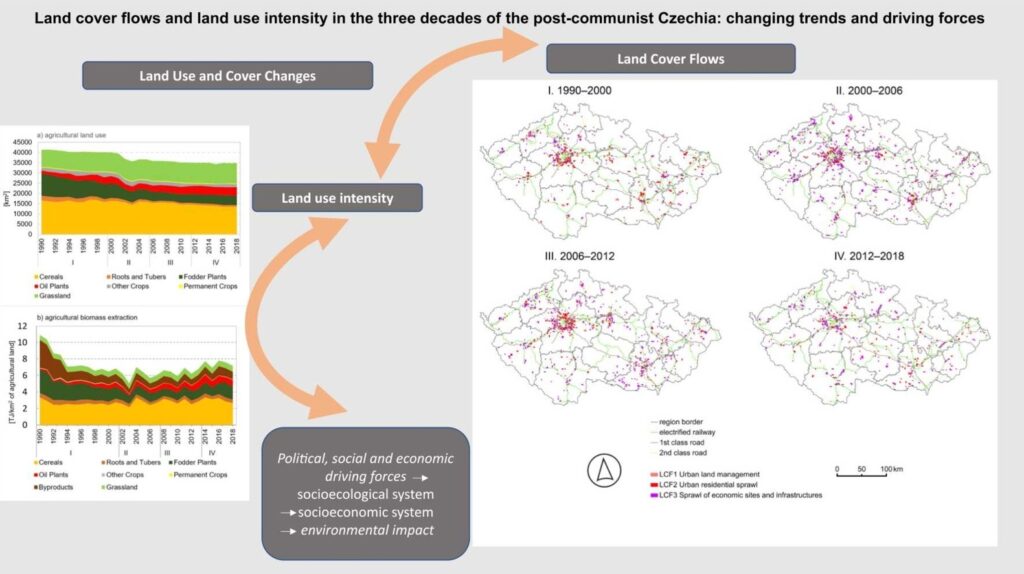Understanding the Complex Dynamics of Land Use and Cover Changes in Czechia
The management of land resources faces multifaceted challenges, driven by the demand for biomass resources and the expansion of the economy. To address these challenges, gaining insights into the drivers and consequences of land use and cover changes is essential. A recent study Grešlová et al. (2023) introduces an innovative approach that merges spatial analysis methods such as Land Cover Flows with socio-economic concepts like Material and Energy Flow Accounting, Human Appropriation of Net Primary Production (HANPP), and Final Energy Return on Investment (FEROI).
The primary objective of this research is to identify key shifts in land use and cover, connect them with underlying socio-economic processes, and contextualize them historically. The findings reveal that overall land use intensity has been on the rise, although positive trends like the expansion of grasslands and forests began after the collapse of socialism. However, the increasing intensity of agricultural production due to suburbanization has reversed these trends.
Up until the 2000s, the Human Appropriation of Net Primary Production (HANPP) showed a decrease, but by the end of the study period, it increased from 55% in 2012 to 70% in 2018. Interestingly, while the volumes of agricultural biomass extraction have been growing, the actual area of agricultural land has decreased.
The study also found that the Final Energy Return on Investment (FEROI) increased and stabilized at around 1.0 during the last period (2012–2018), resembling values from the year 2001. Notably, suburbanization rates reached their peak after 2000 at 250 m2/km2/yr.
This research sheds light on the intricate interactions between human activities and land use, providing valuable insights for sustainable land management in an evolving world.
More in: Grešlová, P., Laštovička, J., Štych, P., & Kabrda, J. (2023). Land cover flows and land use intensity in the three decades of the post-communist Czechia: Changing trends and driving forces. In Anthropocene (Vol. 43, p. 100395). Elsevier BV. https://doi.org/10.1016/j.ancene.2023.100395
